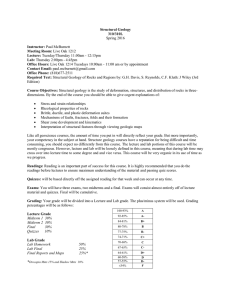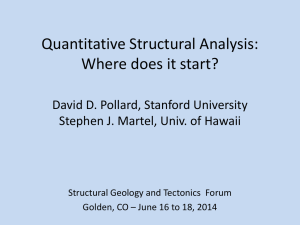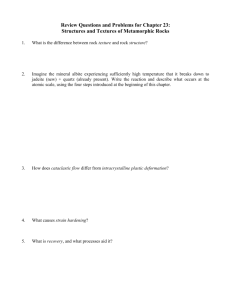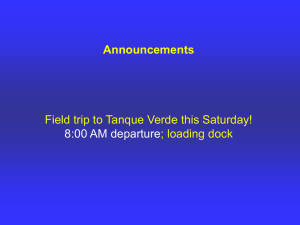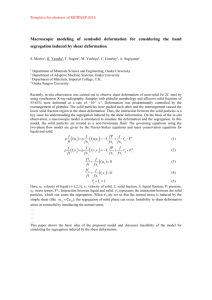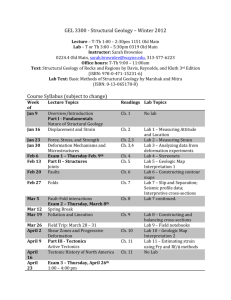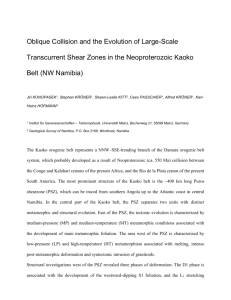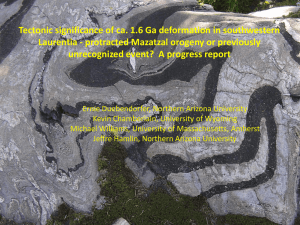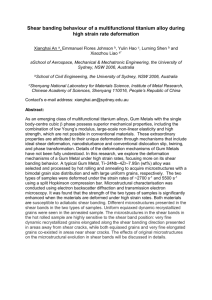Outline
advertisement
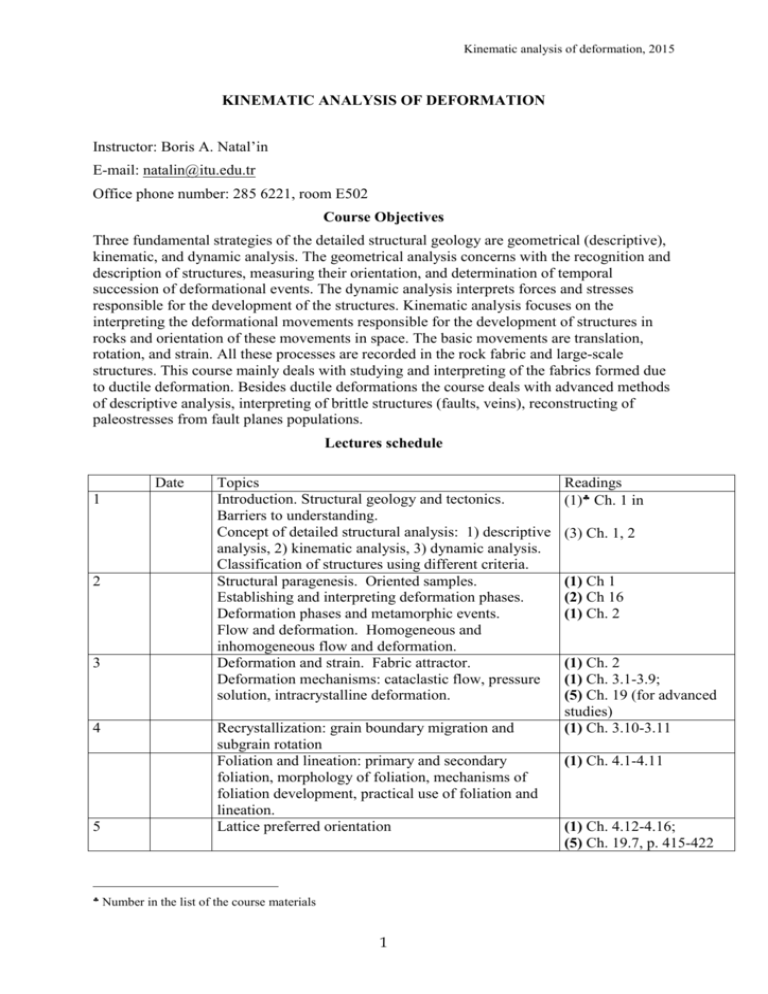
Kinematic analysis of deformation, 2015 KINEMATIC ANALYSIS OF DEFORMATION Instructor: Boris A. Natal’in E-mail: natalin@itu.edu.tr Office phone number: 285 6221, room E502 Course Objectives Three fundamental strategies of the detailed structural geology are geometrical (descriptive), kinematic, and dynamic analysis. The geometrical analysis concerns with the recognition and description of structures, measuring their orientation, and determination of temporal succession of deformational events. The dynamic analysis interprets forces and stresses responsible for the development of the structures. Kinematic analysis focuses on the interpreting the deformational movements responsible for the development of structures in rocks and orientation of these movements in space. The basic movements are translation, rotation, and strain. All these processes are recorded in the rock fabric and large-scale structures. This course mainly deals with studying and interpreting of the fabrics formed due to ductile deformation. Besides ductile deformations the course deals with advanced methods of descriptive analysis, interpreting of brittle structures (faults, veins), reconstructing of paleostresses from fault planes populations. Lectures schedule Date 1 2 3 4 5 Topics Introduction. Structural geology and tectonics. Barriers to understanding. Concept of detailed structural analysis: 1) descriptive analysis, 2) kinematic analysis, 3) dynamic analysis. Classification of structures using different criteria. Structural paragenesis. Oriented samples. Establishing and interpreting deformation phases. Deformation phases and metamorphic events. Flow and deformation. Homogeneous and inhomogeneous flow and deformation. Deformation and strain. Fabric attractor. Deformation mechanisms: cataclastic flow, pressure solution, intracrystalline deformation. Recrystallization: grain boundary migration and subgrain rotation Foliation and lineation: primary and secondary foliation, morphology of foliation, mechanisms of foliation development, practical use of foliation and lineation. Lattice preferred orientation Number in the list of the course materials 1 Readings (1) Ch. 1 in (3) Ch. 1, 2 (1) Ch 1 (2) Ch 16 (1) Ch. 2 (1) Ch. 2 (1) Ch. 3.1-3.9; (5) Ch. 19 (for advanced studies) (1) Ch. 3.10-3.11 (1) Ch. 4.1-4.11 (1) Ch. 4.12-4.16; (5) Ch. 19.7, p. 415-422 Kinematic analysis of deformation, 2015 6 7 8 9 10 11 Shear zones. Brittle fault rocks. Mylonites: characteristic fabric elements, classification, mylonite and metamorphic conditions. Sense of shear: oblique foliation, shear band cleavage, mantled porphyroclasts, mica-fish, and quarter structures. Potential shear sense markers Dilatation sites: fibrous veins, strain shadows, strain fringes and fibers Veins in non-coaxial progressive deformation. Kinematic analysis of folds. Deformation of lineation. Rotation of structural elements using stereonets. Kinematic and dynamic analysis of brittle faults Shear sense indicators in the brittle regime Fault array analysis, Paleostress analysis (1) Ch. 5.1 - 5.4 (1) Ch. 5.5 - 5.6.8 (1) Ch. 5.6.11; (7) (1) Ch. 6.1 - 6.5 (4) Ch. 22 (1) Ch. 5.7; (6) (2) 12-5; (8) Course Materials: 1) Passchier, C. W. and Trouw, R. A. J., 1996. Microtectonics. Springer, Berlin, Heidelberg, New York, 289 p. (PT) 2) Marshak, S. and Mitra, G., 1988. Basic methods of structural geology, Prentice Hall, Englewood Cliffs, New Jersey, 446 p. 3) Davis, G. H. Structural geology of rocks and regions. John Wiley $ Sons, 1984, 492 p. 4) Ramsey, J. G. and Huber, M. I. 1987. The techniques of modern structural geology, Volume 2: Folds and Fractures, Academic Press, London, pp. 309-700. 5) Twiss, R. J., and Moore, E. M., 1992. Structural geology, W. H. Freeman, New York, 532 p. 6) Petit, J. P., 1987. Criteria for the sense of movement on fault surfaces in brittle rocks, J. Struct. Geol., 9, 597-608. 7) Hippertt, J. F. M., 1993. "V"-pull-apart microstructures: a new shear sense indicator. J. Struct. Geol., 14, 145-159. 8) Aleksandrowski, P., 1985. Graphical determination of principal stress directions for slickenside lineation populations: an attempt to modify Arthaud's method, J. Struct. Geol., 7, 73-82. 2
